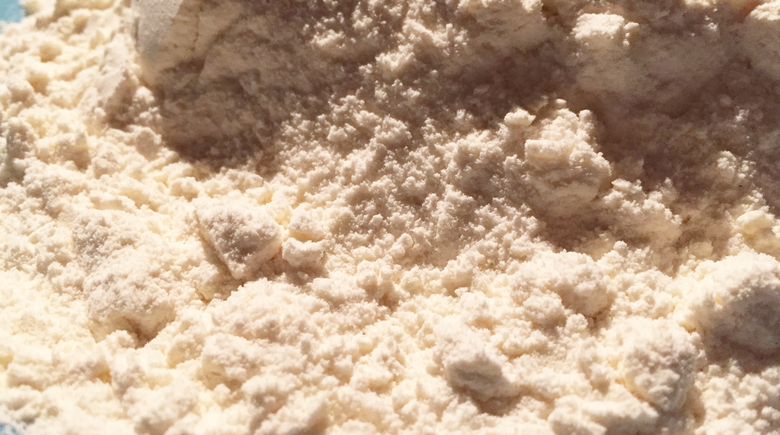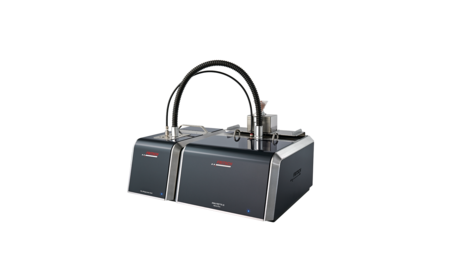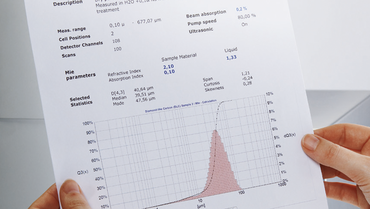The sieve analysis is due to good reason no ICC- standard method, because it can not be standardized. Two steps are processed in trying to improve the reproducibility of a sieve analysis of flour. A better reproducibility is achieved with the Laser Particle Sizer.
New Technology of the Particle Size Determination
The sieve analysis is due to good reason no ICC- standard method, because it can not be standardized. Especially since the moisture fluctuations of the sievings cause a substantial degree of errors, equally to the different flow characteristics. The quality of the sievings depend on it and never achieve 100 %, here an endless long sieving period would be required, especially if several sieves are below one another. Two steps are carried out in trying to improve the reproducibility of a sieve analysis of flour. First, with only one sieve the finest material for example below 90 μm is sieved off and in a second step, the now better flowing throughput is sieved with the remaining sieve set. A better reproducibility is achieved with the new Laser Particle Sizer, which can be universally used to determine the particle size distribution of all intermediate and final milling products. It is suitable for the use in quality control and process control. Through the flexible programmability of the entire dispersion and measuring process it is very well suitable in the areas of research and development.
Characteristics of the instrument
Laser Particle Sizer ANALYSETTE 22 NanoTec
- Measurement of powdery samples in an accelerated airflow
- For sample volumes of below 1 cm3 up to approximately 100 cm3
- Degradation of agglomerates with special annular gap Venturi nozzle
- High-frequency feeder for continuous and residue-free sample feeding
- Automatic computer controlled adjustment of the dispersion pressure
- Freely programmable fully automatic measurement process
- Measuring range 0,1 – 2100 μm
- Especially fast and easy to clean
- Multifunctional exhaust system for automatic sample exhaustion during the measurement and for cleaning (e.g. of surplus sample material) after the measurement
The included FRITSCH MaS control Software for simple operation, free programmability for maximum flexibility and efficient cleaning, simplifies tasks and secure the quality of the measurement results.
Advantages compared with the conventional sieve analysis
- Substantially quicker, entire needed time including evaluation approximately 1 minute. Therefore double and multiple analyses are feasible which are sometimes beneficial.
- Reproducibility substantially better
- Higher resolution of the measuring results up into the low particle range, which can no longer be achieved with sieves
How does laser measurement work?
In order to measure the size of a particle, a laser beam is directed at it. The partial deflection of the laser light results in a characteristic, ring-shaped intensity distribution behind the sample, which is measured with a specially shaped detector. The particle size is calculated with a suitable scattering theory based on the spacing of these rings. Large particles produce closely situated rings small particles produce more widely spaced rings. Since 30 years FRITSCH has been building Laser Particle Sizers with a special patented optical set up. A convergent laser beam shines through the measuring cell, and its distance from the detector can be adjusted depending on the sample material. Is it spaced far from the detector the only slightly scattered light waves cover the entire detector and use all the channels for the measurement. Large particles are measured perfectly in this manner. Is the measuring cell positioned close to the detector, the heavily scattered light beams of the small particles are measured with the full resolution of the detector.
Implementation of a measurement
Basically two different types of measurement are possible. With wet measuring, the sample material is dispersed in a suitable liquid and continuously transported through a closed circuit through the measuring cell. Whereas during the dry measurement powder is blown through the measurement cell and then vacuumed off. During such a dry measurement, after the selection of the standard operating procedure (SOP) a background measurement is automatically performed without sample material. Afterwards a vibratory feeder transports the previously added to the sample compartment material perfectly to the measuring cell, whereas the material is accelerated with pneumatic forces. The software automatically adjusts the needed sample amount. Additionally the software controls the pressure of the used air current, which influences the dispersion, i.e. the degradation of agglomerates in single particles, directly prior to the measurement. Ensuing, the software MaS control calculates automatically the particle size distribution and a summarized report can be generated. The duration of the entire measurement process, including the calculation - depending on each individual sample - is typically 30 seconds up to approximately two minutes. With the new particle sizer, particle size analyses are a simple task – for professionals as well as for newcomers – and this in all fields of application.
-
Download the FRITSCH-report as PDF file







